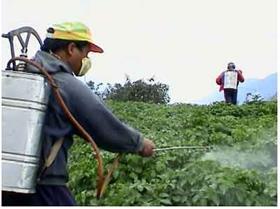
The European Food Safety Authority (EFSA) has published its third Annual Report on Pesticide Residues, which gives an overview of pesticide residues found in the European Union during 2009 and assesses the exposure of consumers to those residues through their diets.
According to the EFSA, the report shows that compliance rates continue continued to rise, with 97.4 per cent of the samples analysed falling within the permitted Maximum Residue Levels (MRLs), a rise of one percentage point since 2008.
In the EU-coordinated part of the monitoring programme, which is designed to collect directly comparable data from reporting countries and to enable dietary exposure assessment, 61.4 per cent of samples were free of measurable pesticide residues.
Compared with 2006, the last time the same food commodities of plant origin were analysed under the EU-coordinated programme, the MRL exceedance rate has fallen from 4.4 per cent to 1.4 per cent – an improvement the EFSA attributed in part to the harmonisation of MRLs in 2008, but also to the more effective use of legislation and changes in the pattern of pesticide use in Europe.
Reporting countries, which included all EU member states as well as Norway and Iceland analysed nearly 68,000 samples of food commodities for 834 pesticides, with the number of commodities analysed rising from under 200 in 2008 to around 300.
EFSA concluded that based on current knowledge, long-term exposure to residues detected in major foods that make up the European diet would not raise health concerns. The assessment of short-term acute exposure was based on worst-case scenarios – assuming the consumption of large portions of a food item containing the highest recorded residue – and EFSA concluded that risks to consumers were unlikely. Of the 10,553 samples taken in the EU coordinated programme, a potential risk could not be ruled out for 77.
MRLs were more often breached in samples from countries outside the European Economic Area (6.9 per cent of samples) than in those from the EU and EFTA countries (1.5 per cent of samples).
No specific MRLs were established for organically produced commodities so those used for conventionally produced commodities are applied. The MRL exceedance rate recorded for organic produce was lower by a factor of 7 compared to conventionally grown produce.



